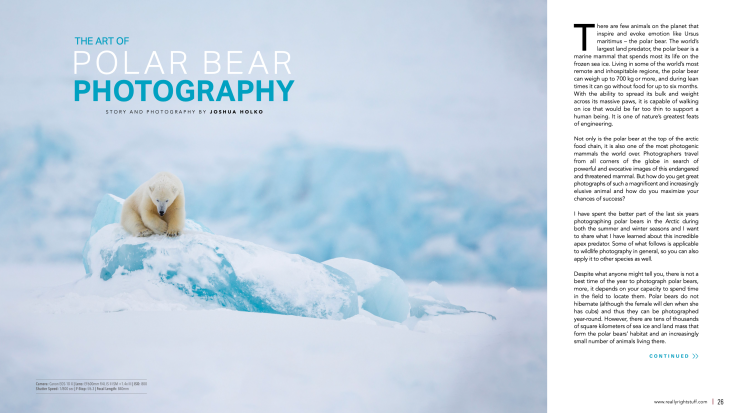Recently I finished reading Paul Nicklen’s new e-book Photographing Wild (well worth the $15 price tag) in which he discusses something he calls the 20/60/20 rule. The 20/60/20 rule is something I have long adopted and practised in my own photography; although I never thought to describe it or write about it. In fact, I have been doing it so long now that it has become instinctive for me and I find myself moving subconsciously through this principle as I photograph my subjects.
The principe of the 20/60/20 rule is that you should spend roughly the first 20% of your time on a shoot getting the safe shots. Compose the image as best you can, make it sharp, in focus and get the shot. Thats the first 20% of your time on the shoot invested. The next 60% is where you push yourself creatively and where you are likely to make your best images. Go beyond the safe shot you already have in the can and push yourself both creatively and technically to go beyond the obvious. This is when you can make truly great photographs that really stand out. Its a time to zoom with your feet, to change composition, try different angles, move higher or lower and to take a different approach to vary your captures. The last 20% of your time is about experimentation and doing things you might not normally do (such as a multi-second hand held exposures, or an in camera composite or such like). This last 20% is a time to experiment and to go a bit crazy to see what you can produce when the standard limitations and rules are removed. Images from this last 20% often don’t work, but occasionally they do, and something truly unique and powerful can be produced. The important aspect to this last 20% is that its free time to experiment and to learn from the results. Its a great way to ensure you continue to grow as a photographer.
Paul describes the process in some detail in his book as he implements it in his workflow (a short excerpt of which is included below).
When I’m working, I want to give my editor something that National Geographic will be guaranteed to publish. So if I see a bear coming out of the forest, I make sure it’s sharp and in focus, and do the best job I can on the composition, light, and mood. That’s the first 20%. If it’s sharp and in focus, it’s still a good image, but I don’t want good: I want great. And then I go to the 60%. This biggest chunk of time is where I sit and push my own artistic ability and technical skills as a photographer; this is how I force myself to come back with something that’s truly special. Once I’ve got that and I’m satiated, satisfied, and really happy with what I’m creating, then I’ll say, “Let’s try something different; let’s do a multi-second exposure just to see what happens.” This is the last 20% of the 20-60-20 rule, and it’s there for my growth as a photographer.
I think this is excellent advice that many photographers would do very well to take note of and try and implement in their photography. I often see photographers standing around on workshops wondering what to do next after they have captured the obvious photograph (the first 20%). If you take Paul’s (and my) advice and move into the next 60% and final 20% you will never be standing around wondering what to do next. Your photography will improve and you will learn more about what works and what does not work when composing your photographs. Perhaps best of all implementing this advice in your workflow costs you absolutely nothing.
I do highly recommend you invest $15 in Paul’s e-book ‘Photographing Wild‘. As well as containing some fantastic advice, and wonderful photographs its also inspirational material for your next photography shoot.






